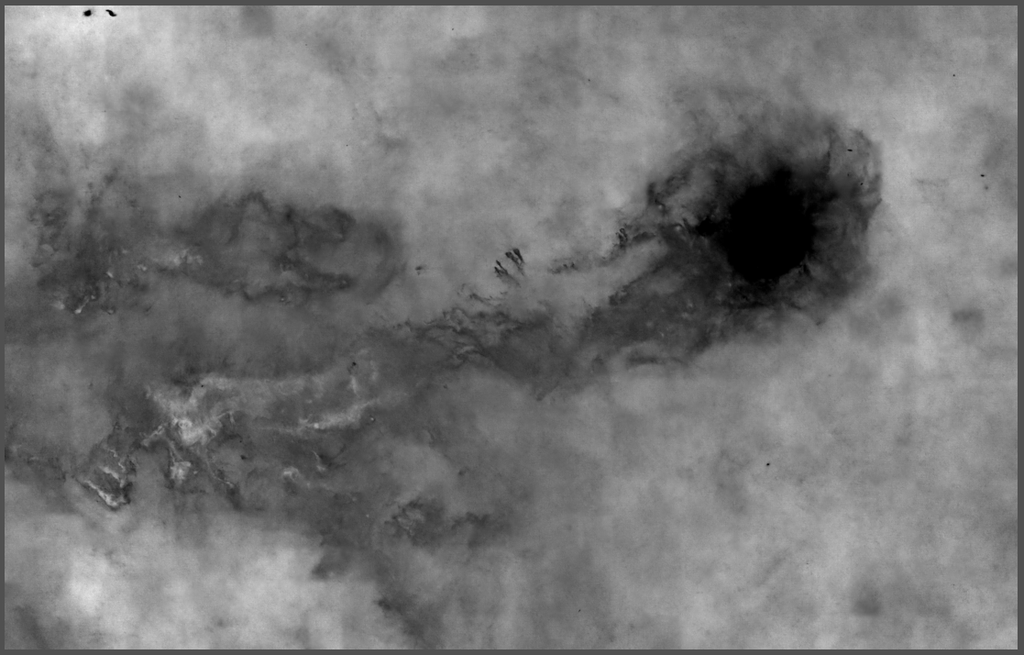Anyways my latest image is one I enjoyed and pretty satisfied with despite limitations and I would love to have feedback on what I can improve on.
https://astrob.in/3ctip6/0/
My main objective with this one was to try and make the cocoon and its surrounding dust look more forward than the background Ha, taking a lot of inspiration from a lot of recent images of the area. I really enjoyed seeing the depth others have been able to pull off.
I live in a B4 at about 6300ft/2000m. One of the challenges I ended up having was contending with high altitude haze from wildfires about 500 miles away. I'll most likely get more data once this next batch of monsoon storms pass but I wanted to take what I had to see what I could do. I also have not dove into masks that much so I took the time to learn some basics to help me integrate the Ha from my L-Ultimate while preserving the broadband colors in the cocoon.
For the most part my process looked like this:
Graxpert script
BlurXterminator - correct only then no secondary options (atuomatic PSF, sharpen stars at 0.45, nonstellar at 0.75)
SPCC
Align images then dynamic crop
NoiseXterminator (lower settings before stretch, 0.1 detail and 0.4 denoise)
StarXterminator
Clone broadband image and create mask using extracted luminance and ACDNR
Toolbox script combine Ha with RGB. - Don't remember exact numbers, had Ha north of 6 with a touch of beta to get a more rich red, and a little background noise adjust to get the red out of the mollecular cloud.
GHS - Exact curves again I couldn't tell you. Though I usually start with an arcsinh to move the histogram off the left wall, then linear to bring the black point back down to just before clipping. Then generalized stretches to get to a point I was satisfied with, plus a touch of saturation stretch.
NoiseXterminator (0.25 detail and 0.6 denoise)
Broadband stars only image I utilized Seti Astro's star stretch script.
I saved both images as a TIFF and went over to photoshop.
Ive had better luck adding stars back into the image in photoshop using the screen layer settings, then I just played with curves and camera raw filter to tone down the stars. Its a busy area, especially when I only had 600" subs to work with before storms and fires.
Did a little more adjustments with the starless image using camera raw filter to bring down the highlights to show off more in the core of the cocoon and bring up more of the mollecular cloud with the masking brush inside camera raw. Played a bit more with saturation and color, as well as fix some blemishes from the extracted stars.
As a side note this is the mask I came up with using luminance and ACDNR. I am sure I could do a lot more with masks as I dive more into them. If there is anything blatantly obvious I should change then I am all ears! Another thing I noticed thanks to the mask was the blocky patern from what Im thinking was StarXterminator creating it. Would large overlap tone that down or something else? I really haven't come across that problem yet surprisingly.

Anyways, thank you for your time and attention! I hope to learn and be taught more and clear skies to all!


